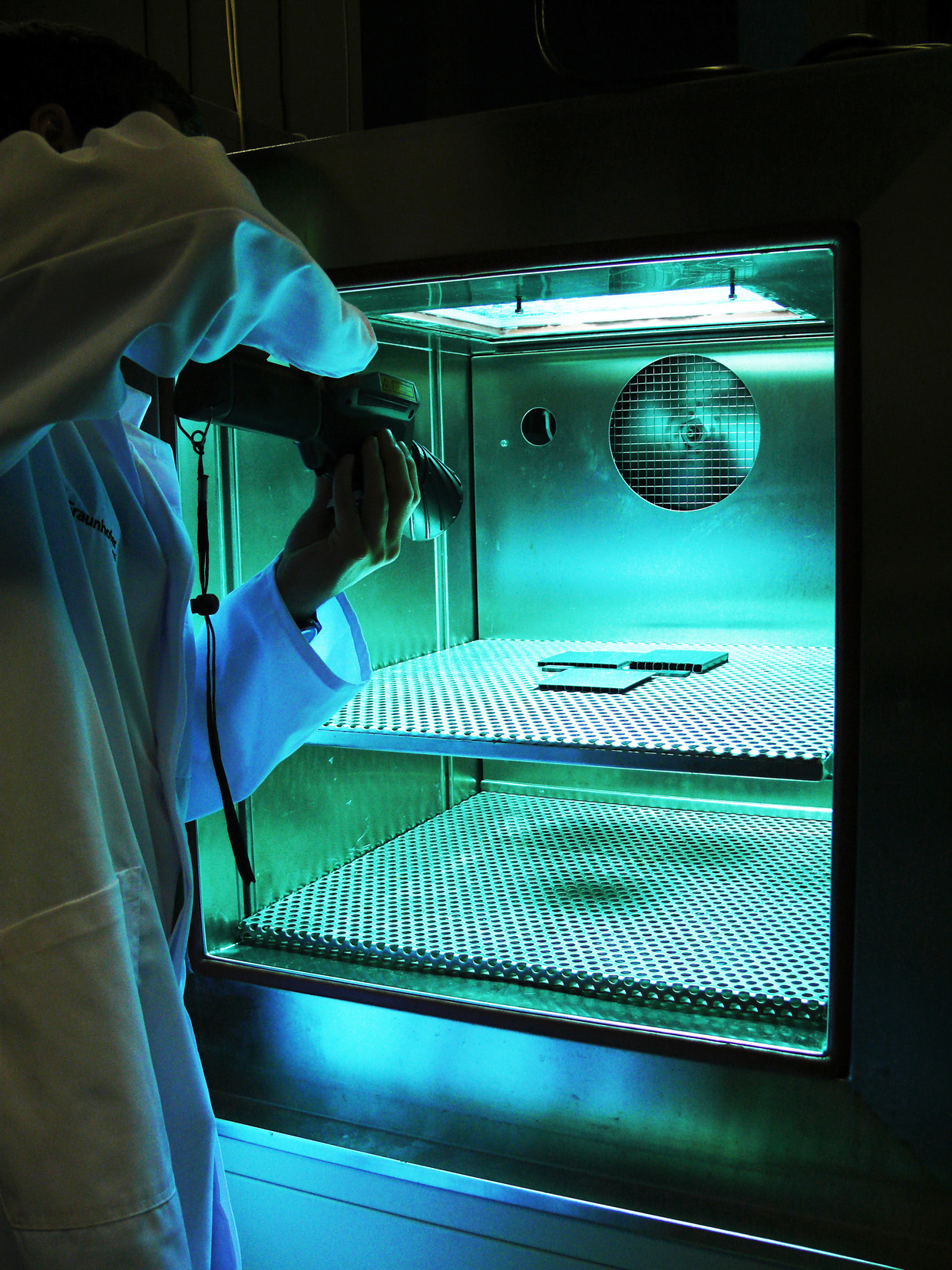Press Release #21
Improved Design – Fewer Costs: Solar Collectors Made from Polymers – Fraunhofer ISE Showcases Product Innovations at Exhibition
An exhibition taking place in front of the Congress Center Concert Hall in Freiburg between September 23 and 25 unveils how solar collectors manufactured from plastic may look in the future. The Fraunhofer Institute for Solar Energy Systems ISE, which has been conducting research and development in this area for many years, is using the event to present polymeric solar thermal collectors and components alongside its industrial partners. Under the motto efficiency and design, the exhibits provide an insight into research trends and product innovations for solar thermal applications. The exhibition is taking place as part of the Solar Heating and Cooling Conference, for which Fraunhofer ISE is the scientific chair.

While experts and scientists gather in the auditoria of Freiburg’s Concert Hall for the International Conference on Solar Heating and Cooling for Buildings and Industry (September 23–25), passersby have the opportunity to visit an accompanying exhibition held in front of the Congress Center. Here, polymeric collectors, storage tanks and other components are being presented. In addition to collectors from the Israeli company Magen Eco Energy, collector concepts and storage systems from Aventa, Enerconcept, Sunlumo, Roth and Consolar are on show. A particular highlight includes Fraunhofer ISE’s polymeric thermosyphon system for sunny regions, which thanks to its extruded twin wall sheets can be manufactured at a low cost (patent pending). The exhibition was arranged and organized by a working group of the Task39 of the Solar Heating and Cooling Program of the International Energy Agency (IEA). Task 39 researches polymer-based components for use in solar thermal systems and serves as an international platform for establishing networks between experts in solar thermal technologies and polymer R&D from research and industry.
Seeking Acceptance for Product Innovations
Dr. Michael Köhl, a scientist at Fraunhofer ISE, has been working on designing polymer-based solar thermal systems in international committees for many years. Among other initiatives, he is leading Task 39 of the IEA’s Solar Heating and Cooling Program, which is presenting its latest scientific results at the conference. Today, plastics are found in a variety of products and applications, having replaced materials such as glass or steel. They are decisive in redesigning products as well as reducing their costs and improving quality, and are increasingly being used in solar thermal collectors, storage systems and components. Despite the progress and developments brought about by the industry to date, Köhl believes that a great deal of action still needs to be taken. “Thanks to the dedicated work of our colleagues from research and industry, we now have a series of efficient and yet aesthetically pleasing products at our disposal,” states Michael Köhl. “However, it is now down to us to ensure that confidence is built in these newly developed, competitive products in the long term.”
Tests and Measurements for Quality Assurance
In order to optimize the quality and durability of product innovations based on plastic, Köhl has been devoting his work at Fraunhofer ISE to the durability analysis of polymeric materials for many years. These are analyzed scientifically and in detail, allowing any weaknesses, which become apparent during the quality checks, to be detected at an early stage. Fraunhofer ISE boasts a wide range of testing and measuring devices to investigate the longevity and degradation of polymeric materials. Its equipment includes climatic chambers with irradiation, as well as Raman or Fourier Transform Infrared (FTIR) spectroscopy. The measurements recorded allow the scientists to draw conclusions on the applicability and durability of polymeric materials and their potential for optimization. At first, Köhl and his team primarily examined polymeric materials used to manufacture PV modules. However, as blends of these materials are increasingly used in absorbers or in the frames and glazing of solar collectors, in recent years researchers have been increasingly shifting their focus to solar thermal applications. The latest result of this is the thermosyphon system, which is being showcased at the exhibition.
Further information is available at:
http://task39.iea-shc.org/
http://www.shc2013.org/
Last modified: